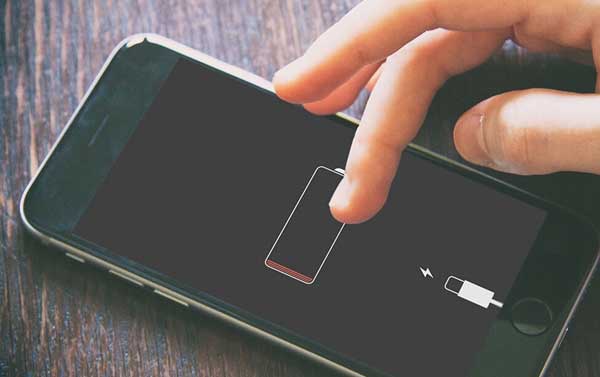You leave your phone plugged in for hours only to find that it's only partially charged. There are several potential causes for a slow-charging phone. This comprehensive article will explain how to solve nine possible reasons why your phone is charging slowly. Then, we'll discuss more techniques for charging your phone quickly and maximizing its battery life over the long run.
HOW COME MY PHONE IS CHARGING SLOWLY?
Take a deep breath before you worry and hurry to update your phone. There is likely a self-explanatory and straightforward explanation for why your phone is not charging as quickly as usual. If your phone is charging slowly, here are nine potential causes to investigate:
Something needs to be correctly plugged in.
Checking for faulty connections should be one of the first steps to diagnose a phone that charges slowly since this is the typical cause. Frequently, the power adapter must be inserted entirely into the wall socket, or the cable has been disconnected at either the adapter or the phone port. If you reinsert the adapter or cable, the problem should be resolved, and regular charging speed should resume. If it does not resolve the issue, consider one of the other causes on this list.
You are using your phone while it is charging.
We regret to inform you, power users, that scrolling on your phone while charging will slow the charging process. Consider it this way: When you use your phone while it's charging, it expends energy at the same time it's taking it in, which means it will take significantly longer, even with a fast charger, to reach 100 percent power. However, if you leave the phone on the charger undisturbed, it will fully charge considerably faster. Consider it a message from the cosmos that it's time to take a screen break if your phone needs charging. If you let your phone rest, it will charge more quickly.
Running in the background are applications.
Occasionally, your phone may use power while not actively using it. Specific applications may run silently in the background, using battery power even while you're not using your phone. If you are trying to remember the last time you cleaned up your background applications, you may be astonished to discover how many are using your battery life without notice. We recommend deleting your applications' cache before plugging in your phone to ensure a clean slate for charging.
The temperature is very high.
High temperatures have a detrimental effect on the performance of a phone's battery and will hinder charging. If it is hot, charge your phone indoors near a fan or air conditioning equipment. Avoid hot places such as automobile dashboards and sunny window shields. Instead, place the phone in the shade on a cold, hard surface that allows heat to disperse quickly. Instead of keeping it cold, placing it in a drawer or covering it with anything will trap heat.
The port or cable for charging is soiled.
If dirt, lint, or other material is on your charging cable or phone port, it might interfere with the contact and slow the charging process. Using technology wipes, a compressed air can, a small brush, or cleaning putty, thoroughly clean your phone and charging wires to ensure this is not a problem. Your phone will be cleaner than when you began, which is always right.
You are using an outdated adapter or cable.
You should replace your charging cord and adapter when you upgrade your phone. New phones have charging capabilities that your old charger may need help accommodating. If your new phone can handle up to 20W of electricity, but your old adapter can only offer 10W of power, your phone will take considerably longer to charge with the old adapter. Additionally, you should frequently examine your cables and adapters for damage and replace them if you find any.
You are charging wirelessly.
Although we adore the convenience of wireless charging, it cannot always equal the speed and power of a standard wall outlet. In reality, Qi wireless charging standards are limited to 7.5W, but the current generation of smartphones can support anywhere from 15 to 25W when connected to the appropriate wall charger. MagSafe-compatible iPhones are the exception. If you use a MagSafe-compatible wireless charger, your phone will receive 15W of power. Even with MagSafe phones, wireless charging via a wall outlet is faster.
The energy supply is feeble.
Even if you use the same connections, charging your phone in your car or laptop will take longer than using a power outlet. Because they were not intended to be utilized as power sources, their maximum output is significantly lower than that of a wall outlet. Your laptop or automobile can only give a trickle of electricity, but a wall outlet is comparable to a gushing faucet. Both will fill the metaphorical glass of your phone's battery. Some will take far longer than others. And if you're using a portable battery to charge your phone, be careful to verify the maximum wattage output, which varies widely and significantly influences how quickly your phone charges.
The battery is running down.
The lithium-ion batteries used in cell phones cannot work optimally indefinitely. Depending on how you use your phone, the battery performance will begin to decline after two or three years. Your phone will retain a charge for a short time and take longer to reach full capacity. Eventually, it will no longer retain a charge (though most people upgrade their phones long before they reach this point). Specific actions, like keeping the phone on the charger for an extended time or charging it in a hot location, might accelerate the battery's degradation. In certain situations, you may find that your phone's battery is approaching the two-year milestone.
HOW TO MAKE YOUR PHONE CHARGE FASTER
Looking for other ways to charge your phone more quickly? Here are nine of our favourite recommendations for more effective smartphone charging, regardless of brand:
Connect it to the wall.
Even though charging via a wall outlet is so 2000s, it's still the quickest way to charge your phone (albeit it's less handy than wireless charging). If you need a quick charge, connect your phone directly to the wall so it can charge now from the source.
Obtain a new adaptor and cable.
Almost sure the power adapter and cable that came with your phone will be the quickest and most dependable way to charge it. However, almost nobody has a mobile phone charger (if you do, we want your secrets!). When you obtain a new phone, replace your backup cords with the latest technology so that you can charge as quickly as possible at home and work.
Bring down the temperature.
When it comes to charging your smartphone, you should lower the temperature. This involves storing it in a cool, dark location away from direct sunlight. However, do not place it in the refrigerator or freezer. The dramatic drop in temperature will have the same negative effect on battery performance as an increase in temperature. Be like Goldilocks and instead seek a reasonable middle ground.
Remove the casing.
Regarding decreasing the temperature, one way to assist your phone in dissipating heat is by removing the phone cover. Depending on the type of situation you have, this may be more difficult than it seems. However, removing the case may charge quicker if it's not too difficult. Over time, the reduced temperatures will also improve battery performance.
Disable networking settings.
Wi-Fi, Bluetooth, and location-based services might slow down the charging process. If you still want alerts while your phone is charging, you may deactivate each separately. Just remember to switch them back on once the phone has finished charging. If you do not require phone service, you may activate aeroplane mode with a single button press to accelerate charging.
Turn the telephone off.
If you genuinely need rapid charging, you must go beyond aeroplane mode and turn off your phone before plugging it in. While waiting for your phone to charge, you may perform a fast digital detox.
Maximize battery life.
In the settings of the majority of smartphones, you may improve battery performance. This option is accessible on iPhones running iOS 13 or later by navigating to Settings > Battery > Battery Health > Optimized Battery Charging. Go to Settings > Device care on the Samsung Galaxy and choose "Optimize now" at this time. If you have a smartphone from a different manufacturer, consult the manufacturer's instructions to activate this setting.
Use a battery pack.
This won't necessarily speed up the charging process, but it will assist keep your phone charged if you're a power user rarely near a wall outlet. Plugging it into a power bank for brief daily charges will prevent the battery from being drained, so you never have to worry about your phone dying.
Refresh your software.
Problems in your phone's operating system or the applications you've downloaded may cause delayed charging. By periodically upgrading your phone's operating system and its apps, you will always have the most recent bug patches downloaded, promoting the most extended battery life possible.
When replacing your power accessories, you should always purchase from reputed companies, such as CaseFit, to ensure that you receive high-quality, wattage-delivering equipment. We provide an extensive selection of power accessories for the most common smartphone models, such as charging cables, power converters, and wireless chargers.
If you need Cases for iPhone, Samsung Cases, AirPods Cases and other accessories then go no where except CaseFit as we provide the best cases for your phones which fits perfectly and secure and safeguard your phone which no one else can.


No comments yet